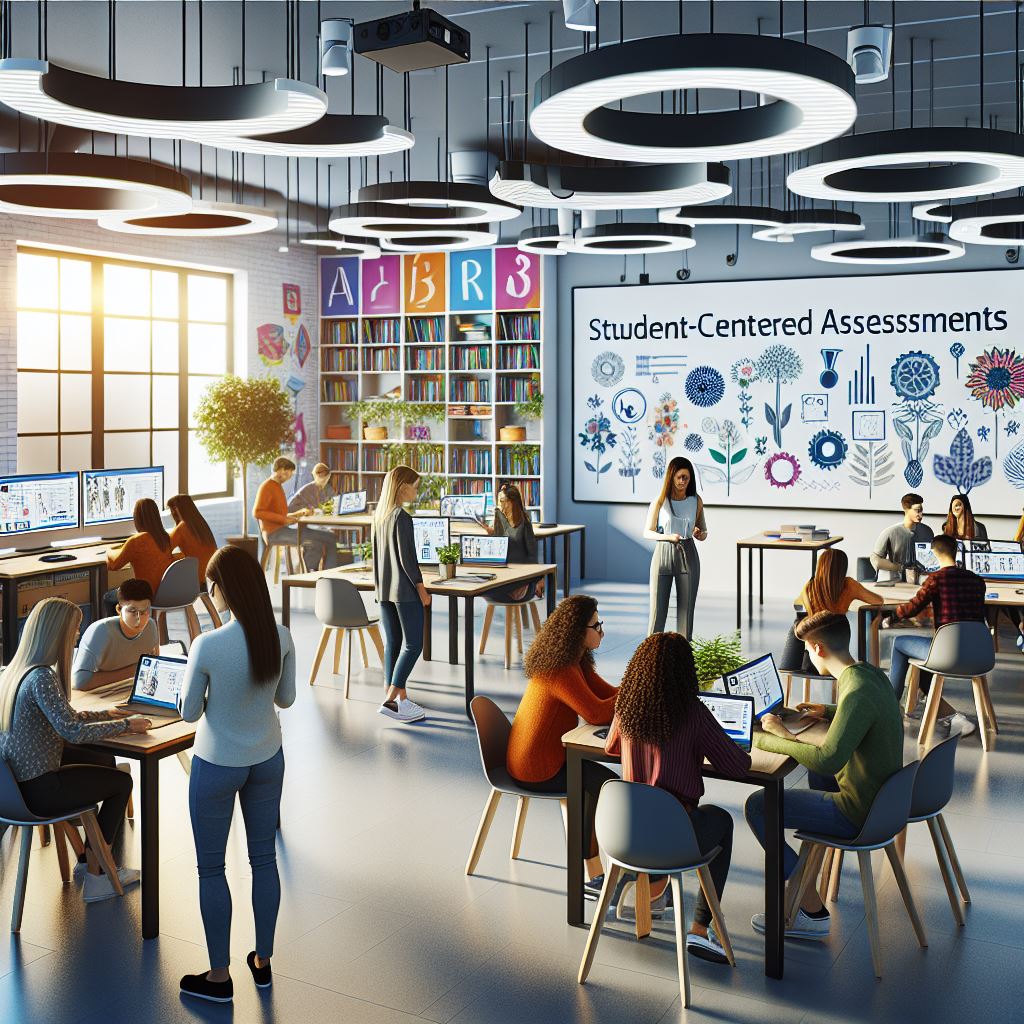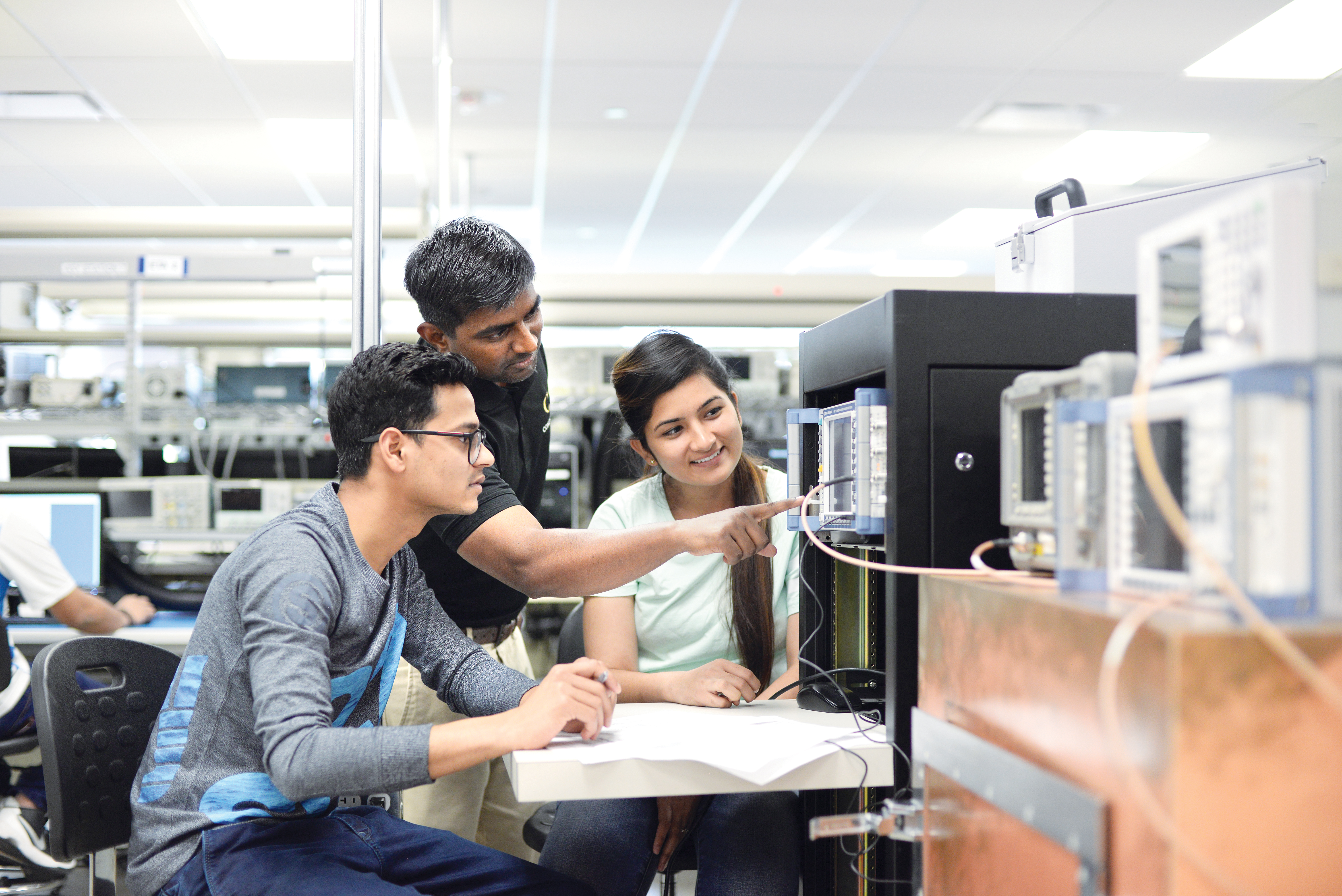
From Traditional to Transformative: Practicing Student-Centered Assessments in Contemporary Classrooms
By Dr. Monsurat Raji, Assessment of Learning Consultant
In today’s rapidly evolving educational landscape, you could better support your students by reassessing and enhancing your approaches to student assessment. Traditional assessments, often limited to tests, superficial learning, and rote memorization, fail to capture the full spectrum of student learning and capabilities. You can better support your students’ growth, learning, and motivation by shifting to more holistic and inclusive assessment strategies. This shift fosters a deeper understanding of the subject matter and promotes your students’ critical thinking, creativity, and real-world problem-solving skills (Ajjawi et al., 2020). Holistic and inclusive assessment methods encourage continuous feedback and active learning, making the assessment process an integral part of the educational experience. Moreover, reimagining assessment practices can help address equity issues by recognizing and valuing different learning styles and backgrounds.
This hub post details eight strategies that might be helpful as you begin to shift from traditional toward more holistic and inclusive assessment practices to better support students’ deep learning through assessment.
1. Emphasize Formative Assessment
What it is: Formative assessments are ongoing assessments that inform you and your students about learning progress during the course, rather than solely at the end.
How it helps: It shifts the focus from merely grading to actively improving student learning. You can use quizzes, peer reviews, concept maps, or reflective journaling as low-stakes opportunities for students to receive feedback and adjust their understanding.
Why it’s important: This approach encourages a growth mindset in students and allows you to identify learning gaps early, improving the overall learning experience.
2. Implement Clear Grading Tools and Transparent Expectations
What it is: A grading tool such as a rubric is a set of criteria used to assess student work. You can share and socialize with students before they start an assignment so they understand how their work will be evaluated.
How it helps: Providing rubrics and transparent grading criteria promotes assessment fairness and clarity. It helps your students understand what is expected of them and gives them clear guidance on how to improve. Socializing your students with grading tools can also provide opportunities to draw feedback from them and thus, clarify some content misconceptions.
Why it’s important: This approach reduces ambiguity in grading, promotes student self-regulation, and helps you avoid unconscious bias while grading.
3. Incorporate Peer and Self-Assessment
What it is: Peer and self-assessment involve students evaluating their own or each other’s work according to established criteria.
How it helps: These assessments foster a deeper engagement with the learning material. When students assess themselves or their peers, they articulate their understanding of the subject, which promotes metacognition and critical thinking. If you will be using peer assessment as part of the overall grade in your course, remember to consult the Conestoga Evaluation of Student Learning Policy: “Any peer evaluation must be identified on the course outline, be limited to 10% of the course grade, and follow objective processes and criteria” (p.1).
Why it’s important: It encourages your students to reflect on their own learning and provides them with diverse perspectives on how to improve, all while enhancing collaborative learning.
4. Use a Variety of Assessment Methods and Integrated Forms of Evidence
What it is: Instead of relying on a single type of assessment (e.g., final exams), you can diversify assessments by implementing projects, presentations, portfolios, journals, interviews, discussions, etc. You could also expand the concept of assessment by integrating diverse forms of gathering evidence of student learning.
How it helps: A variety of assessment methods cater to different learning styles and allow students to demonstrate their knowledge in different ways. This approach can also make your assessments more relevant to real-world applications. Here are links to a variety of assessment tasks and creative assessments you can implement in your classroom. Integrating multiple forms of evidence gives a more comprehensive picture of student learning, allowing you to capture different aspects of a student’s knowledge, skills, and abilities. For example, you might use a presentation to assess oral communication skills, while a portfolio can be used to help students demonstrate critical thinking development over time.
Why it’s important: This approach helps mitigate the risk of students being unfairly disadvantaged by a one-size-fits-all assessment method and provides a more holistic picture of student learning. Integrating multiple forms of evidence allows you to assess students in ways that are more aligned with real-world skills and broader educational outcomes, and helps students demonstrate their learning in diverse ways that match their strengths.
5. Encourage a “Growth-Oriented” Assessment Culture
What it is: This happens in a classroom environment where assessments are seen as tools for learning rather than as high-stakes judgments.
How it helps: You can promote the idea that assessments are opportunities for improvement by offering your students constructive feedback and opportunities for revision. This approach can shift students’ focus from performance to the process of learning.
Why it’s important: It reduces student anxiety about grades, encourages continuous learning, and helps students view mistakes as part of the learning process rather than as failures.
6. Foster a “Learning-Outcome” Mindset
What it is: Shift the focus of assessment from inputs (what content is taught) to outcomes (what students actually learn and can do as a result of their learning). Assessments should align with clearly articulated learning outcomes, reflecting content mastery and skills development.
How it helps: By centering assessments on learning outcomes, you are ensuring that assessments accurately reflect the skills and knowledge students need to develop. This approach promotes alignment between teaching goals, classroom activities, and assessment tasks. This resource may be helpful in aligning assessment tasks with learning outcomes.
Why it’s important: This approach ensures that assessments are purposeful, aligned with course objectives, and relevant to real-world applications, rather than being arbitrary or disconnected from the core learning goals.
7. Incorporate Reflective Practices
What it is: You and your students could engage in reflective practices about the assessment process. This might involve you reflecting on how assessments are designed and how well they support student learning, or students reflecting on their own performance and areas for growth.
How it helps: Reflection helps both you and your students understand assessment more deeply. You may identify areas where assessments might not be serving students well and adjust strategies accordingly. Students can gain insight into their own learning processes, identify areas for improvement, and take ownership of their educational journey.
Why it’s important: Reflection turns assessment into a dynamic, ongoing process of learning, rather than a one-time event. It also fosters a sense of agency in students, making them more active participants in the assessment process and in their own learning.
8. Promote Assessment as a Collaborative Process
What it is: Practicing assessment as a collaborative endeavour between you and your students, where both parties actively contribute to the assessment process can facilitate deep learning for your students. This could involve students drawing up sample questions for classroom discussions, co-creating rubrics, or providing opportunities for feedback and dialogue about assessment results.
How it helps: Collaborative assessment helps students feel more involved in their learning journey, making them more responsible for their own success. It also fosters a sense of shared purpose between you and your students.
Why it’s important: When assessment becomes a two-way conversation, students are more likely to engage meaningfully with the process, which can improve their understanding and application of feedback. You can also gain valuable insights into student perspectives, enhancing the overall educational experience.
As we continue to try to make our teaching and courses more inclusive for all learners, it is essential to implement assessment methods that support all students in reaching their full potential. By shifting from traditional to holistic and inclusive assessment practices, you can better prepare students for life and work post-graduation.
References
Ajjawi, R., Tai, J., Nghia, T.L.H., Boud, D., Johnson, L., & Patrick, C.J. (2020). Aligning assessment with the needs of work-integrated learning: The challenges of authentic assessment in a complex context. Assess. Eval. High. Educ., 45, 304–316.
Blythe, T., & Krechevsky, M. (n.d.). Assessment reimagined shifting the ‘who, what, when, where, how and why’ of assessment. Creative Approaches. Retrieved from Assessment Reimagined.pdf
Gamage, K. A., Pradeep, R. G., & De Silva, E. K. (2022). Rethinking assessment: The future of examinations in higher education. Sustainability, 14(6), 3552. https://doi.org/10.3390/su14063552






